 The tummy tuck is a popular option for women looking to return to their pre-pregnancy form after having children, but a new study shows that the procedure may have additional benefits beyond helping women regain their shape: reducing stress urinary incontinence and back pain.
The tummy tuck is a popular option for women looking to return to their pre-pregnancy form after having children, but a new study shows that the procedure may have additional benefits beyond helping women regain their shape: reducing stress urinary incontinence and back pain.
A study performed by the CAPS Clinic in Deakin, Australia, identified these benefits of the tummy tuck by surveying 214 women who were undergoing surgery at one of nine participating plastic surgery clinics.
On average, the age of the women was 42 years, and the number of births among the participants was 2.5.
Before their tummy tuck surgery, the women were given a survey to rate their disability caused by stress urinary incontinence and back pain.
Forty-two percent of the women considered their disability caused by stress urinary incontinence as moderate to severe.
“Stress urinary incontinence is also a common side effect of pregnancy and childbirth. This stress on the bladder leaves it weakened and susceptible to leaking,” said Dr. Christy Walker, a Plano, Texas, OB-GYN and cosmetic surgeon.
Women living with stress urinary incontinence often experience bladder leakage when coughing, sneezing, running or jumping.
“Stress urinary incontinence can make women shy away from exercising, too, because they are fearful they may experience urine leakage,” Walker said.
Excess skin and fat around the midsection can also cause additional weight on the bladder, increasing the risk of stress urinary incontinence.
Fifty-one percent of the women in the survey self-rated their back pain as moderate to severe.
“It is not unusual for women to experience chronic back pain after pregnancy due to the weight of pregnancy on the abdominal muscles,” Walker said.
The weight of pregnancy can cause the development of a condition known as diastasis recti, in which the muscles of the abdomen weaken and separate. When this occurs, the abdominal core has difficulty supporting the upper body, leading to pain and discomfort.
Separated abdominal muscles can also change the appearance of the midsection, making women look heavier or out of shape.
“A frequent complaint of women who seek out the abdominoplasty procedure is that they have lost their shape due to separated stomach muscles and they want their curves back,” Walker said.
According to statistics from the American Society of Plastic Surgeons, the abdominoplasty tummy-tuck procedure is the fifth-most-popular plastic surgery procedure in the United States, with 129,753 performed in 2017.
During the tummy-tuck procedure, the separated muscles are tightened and sutured to provide more shape and support to the area. The procedure also surgically removes excess skin and unwanted fat from the midsection.
After their tummy tuck, the Australian survey participants again rated their back pain and stress urinary incontinence at both six weeks and six months after surgery. After six weeks, only 9 percent of the women rated their back pain disability as moderate to severe. Stress urinary incontinence disability also decreased; 2 percent of the women still reported that their urine leakage was a serious problem.
While the tummy-tuck procedure has significant benefits regarding both aesthetics and health, there is a drawback to the procedure.
“Recovery from the abdominoplasty surgery can take months and requires many restrictions on activity after the procedure,” Walker said.
But those individuals who are interested in the benefits of the procedure but are wary of recovery have an alternative option with minimally invasive procedures such as BodyTite. BodyTite is a non-surgical solution that uses radiofrequency-assisted lipolysis (RFAL) to target unwanted fat and tighten loose skin.
During the procedure, a very small catheter is inserted into the targeted treatment area. Radiofrequency energy is then applied to melt fat while tightening skin. The melted fat is then removed through the catheter.
“Minimally invasive and non-invasive cosmetic solutions are increasing in popularity because they allow individuals to get the results they want and get back to their regular routines quickly,” Walker said.
Additional benefits of minimally invasive and non-invasive procedures is that the risk of infections, scarring and other complications is significantly reduced, increasing the procedures’ attractiveness to patients.
Sources:
Wolters Kluwer Health. “More than just a cosmetic procedure — ‘tummy tuck’ reduces back pain and incontinence.” ScienceDaily. ScienceDaily, 28 February 2018.
